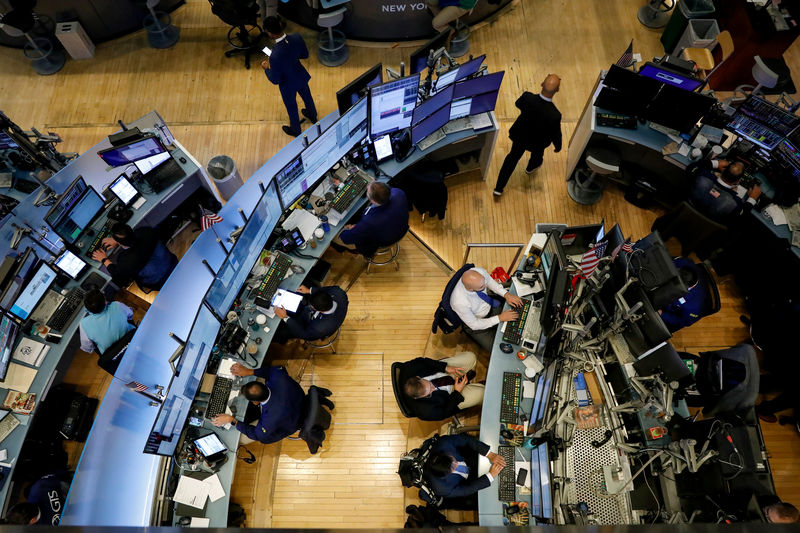By Sinéad Carew
(Reuters) - Bank stocks slipped on Tuesday for a second consecutive day, with a roughly three-week rally losing steam, as overnight borrowing costs soared. The Russell 2000 Value index also lost ground and 10-Year Treasury yields fell.
The S&P 500 bank sector index was last down 0.8%, after falling as low as 1.6% earlier in the session. It had closed down 0.3% on Monday.
Repo rates, the cost for banks and Wall Street dealers to borrow dollars, were elevated, exposing cracks in U.S. money markets in advance of a Federal Reserve monetary policy meeting where traders widely expect an interest rate cut.
"People are starting to get worried about the moves in repo rates," said R.J. Grant, head of trading at Keefe, Bruyette & Woods in New York, noting that U.S. stocks had a major sell-off in December amid repo rate stress.
"If the Fed does cut rates tomorrow, 25 basis points, and signals that they still see the economy on strong footing, the rally in banks could continue. The overall market might not like that but the banks might outperform," said Grant. "The market wants the Fed to be very accommodative."
But bank stocks already rose 13% between Aug. 23 and Sept. 13, while the Russell 2000 Value index rose 10.6% and the 10-year Treasury yields (US10YT=RR) climbed from 1.459% on Sept. 4 to end the Sept. 13 session at 1.899%.
Since the early September bank rally was not underpinned by big changes in bank fundamentals, Rick Meckler, partner at Cherry Lane Investments, a family investment office in New Vernon, New Jersey, said it was likely driven by quantitative traders rather than long-term investors.
"When its trading-related, it's not nearly as sustainable because positions are often unwound or they run out of steam when the trade's over," said Meckler.
The U.S. 10-year Treasury yield was last at 1.7996%, compared with 1.843% the day before.
The 10-year yield had fallen as low as 1.429% during the Sept. 3 trading day as investors worried about escalating U.S.-China trade tensions and the potential impact on already slowing global economic growth. Then the yield rebounded sharply in less than two weeks as fear of trade war escalation turned to hopes for progress in the next round of U.S.-China talks.
"Investors had probably gone too far into the fear trade," and then the rebound was due to "a pause in trade tensions and maybe over-optimism" said Burns McKinney, portfolio manager with Allianz (DE:ALVG) Global Investors in Dallas.
One factor that could be capping U.S. bank stock gains is the relative attractiveness of U.S. Treasuries compared with some overseas bonds, which are trading at negative rates.
"As long as ... you can get positive absolute yields in the United States and negative yields overseas, you're going to see an influx of demand for U.S. assets," said McKinney. "That's going to act as a headwind for the banks for the longer term, a cap to keep them from going too much higher too quickly."
But countering that has been the U.S. banks' capacity to return money to shareholders by buying back their own shares and paying hefty dividends, according to Meckler.
"For some investors, banks represent a kind of call option on the market. They have the kind of dividend yields and buybacks that people feel provide a floor for the stocks," he said.
